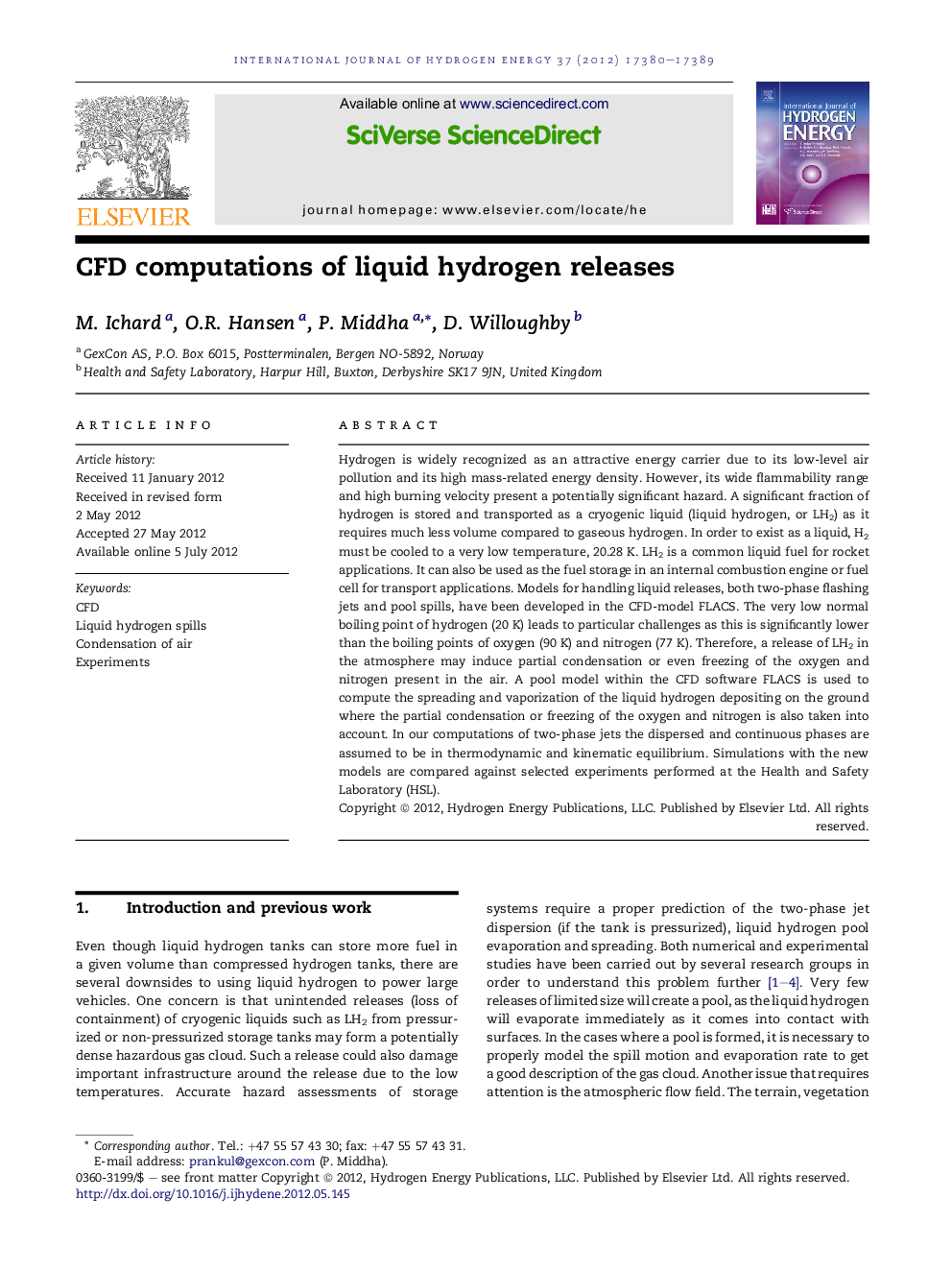| Article ID | Journal | Published Year | Pages | File Type |
|---|---|---|---|---|
| 1270924 | International Journal of Hydrogen Energy | 2012 | 10 Pages |
Hydrogen is widely recognized as an attractive energy carrier due to its low-level air pollution and its high mass-related energy density. However, its wide flammability range and high burning velocity present a potentially significant hazard. A significant fraction of hydrogen is stored and transported as a cryogenic liquid (liquid hydrogen, or LH2) as it requires much less volume compared to gaseous hydrogen. In order to exist as a liquid, H2 must be cooled to a very low temperature, 20.28 K. LH2 is a common liquid fuel for rocket applications. It can also be used as the fuel storage in an internal combustion engine or fuel cell for transport applications. Models for handling liquid releases, both two-phase flashing jets and pool spills, have been developed in the CFD-model FLACS. The very low normal boiling point of hydrogen (20 K) leads to particular challenges as this is significantly lower than the boiling points of oxygen (90 K) and nitrogen (77 K). Therefore, a release of LH2 in the atmosphere may induce partial condensation or even freezing of the oxygen and nitrogen present in the air. A pool model within the CFD software FLACS is used to compute the spreading and vaporization of the liquid hydrogen depositing on the ground where the partial condensation or freezing of the oxygen and nitrogen is also taken into account. In our computations of two-phase jets the dispersed and continuous phases are assumed to be in thermodynamic and kinematic equilibrium. Simulations with the new models are compared against selected experiments performed at the Health and Safety Laboratory (HSL).
► LH2 spill experiments simulated with a new two-phase module inside CFD code FLACS. ► Five different source terms based on different assumed gas volume fractions. ► A sensitivity study on the effects of the source term on the flow field conducted. ► The condensation of oxygen and nitrogen has been modelled.
